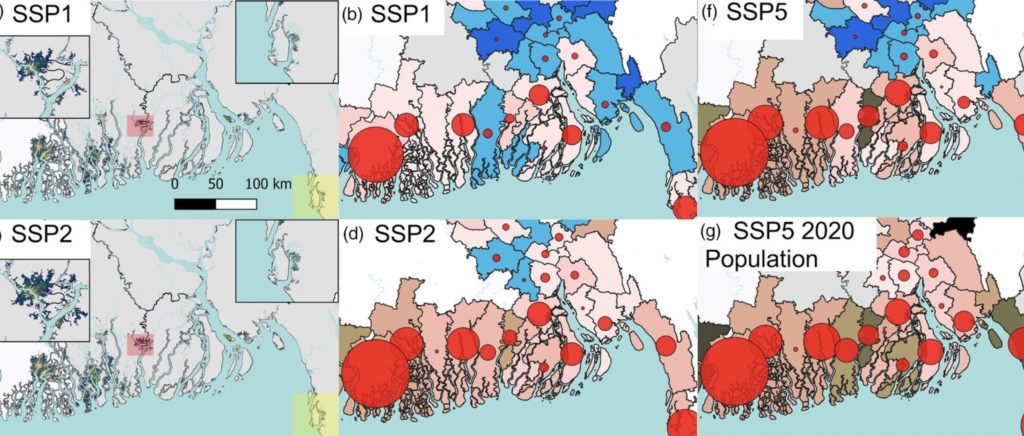In 2020 Cyclone Amphan made landfall in the Bay of Bengal and was the first super tropical cyclonic storm to occur in the area in over 20 years. This paper explores what would happen if this event were to occur in the future, asking: would the risks associated with it change?
Southern Asia is subject to some of the most extreme weather globally, experiencing extreme cyclone activity each year. Despite this, there is very little research into climate extremes in this area.
New research, led by Professor Dann Mitchell at the Cabot Institute, finds that if an extreme weather event – similar to the size of Cyclone Amphan – were to hit the Bay of Bengal again in 2100, it could expose up to a third more people to severe flooding. These changes in risk are attributed to sea level rise and surge, mitigated partially by population change.
To produce these findings, researchers used climate model and socioeconomic projections from CMIP6 alongside a tide-surge model based on the SCHISM-WWM model, the Fathom hydrodynamic model and the High-Resolution Population Density Map (HRPDM) to estimate population exposure to a future event of similar severity to Cyclone Amphan.
The research found that under high- and medium-emission scenarios, the percentage of people in India exposed to flooding could triple – compared to the 2020 event. In a similar scenario looking at Bangladesh, the study estimated that exposure could increase by 20%.
“South Asia is one of the most climate-sensitive regions in the world, with super cyclones causing tens to hundreds of thousands of deaths in historical cases,” explains Dann Mitchell. “This study, in collaboration with local scientists, provides much-needed climate impact information in one of the most vulnerable regions in the world. It presents a critical piece of evidence in support of ramping down our greenhouse gas emissions to achieve the Paris Agreement climate goals, where other lines of evidence all too often focus on high income countries where impacts are lower, and adaptation is more easily achievable.”
Developing the research
Researchers from the University of Bristol and Fathom collaborated to develop a methodology to explore how the population exposed to Cyclone Amphan may have been different under future climate scenarios. Lead researcher Prof. Dann Mitchell produced sea level rise estimates for the region under a number of different time horizons and emission pathways.
Fathom used these data to simulate a coastal inundation model that identified how flooding could change if the same event were to occur in future climate scenarios. Researchers at LEGOS provided storm surge forecasts from the tide surge model based on SCHISM-WWM, and these forecasts were then simulated through Fathom’s hydrodynamic models for the present day. The hydrodynamic models were then re-simulated with sea level rise uplifts applied to the storm surge forecasts to calculate future changes in the extent of flooding. From this, the University of Bristol calculated population exposure for present day and the future, accounting for population migration.
This project was a collaborative effort between the University of Bristol, Fathom, LEGOS and local researchers in Bangladesh who provided information on the location and elevation of polders (coastal flood defences). These defences were incorporated into the hydrodynamic model to represent the changing flood risk of populations currently protected by polders but who may not be in the future with rising sea levels.
This research has provided further evidence for the importance of reducing greenhouse gas emissions in line with the Paris agreement.






